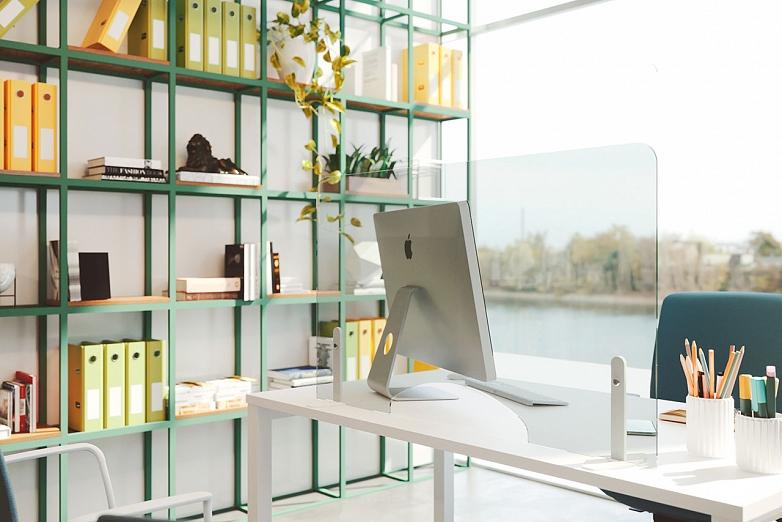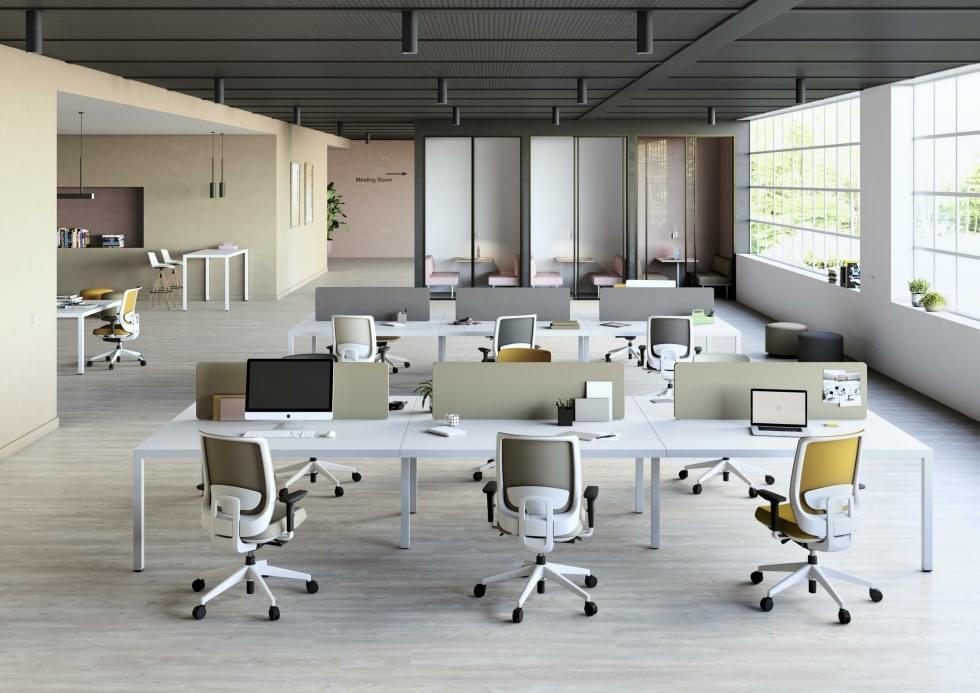Hybrid work: how the coronavirus is changing established ways of working
The coronavirus has forced companies around the world to look for new ways to organize their work. For many of them, a model that combines teleworking and office time is a conceivable future. How does hybrid work function in practice, what are its specifics and what effect does this arrangement have on the offices themselves?
The current situation calls for alternative forms of corporate communication, working hours and physical presence in offices. Some companies have allowed employees to continue working remotely until at least 2021, others have introduced staggered schedules and smaller work groups at the workplace. However, the persisting uncertainty about future developments has led to hybrid work, combining teleworking with office work.
The propensity for this model is also confirmed by a May study from Stanford, which shows that 55% of American workers want to combine work at home and in the office. According to our survey of the working environment in the Covid period, 38% of employees consider a combination of work from home and office to be the best in terms of productivity.
The basic features of hybrid work include more autonomy in deciding where an employee wants to work at a given moment. It also requires employees to actively think about who they have to work with and when, who they have to meet in person, what affects their productivity and what they need to do. Hybrid work is certainly not synonymous with absolute freedom and flexibility.
The physical monitoring of the people in the team was replaced by task management. In practice, companies that have adopted a hybrid approach often set hybrid days for meetings and collaborating in the office and remote days for work with an individual focus. Physical presence is suitable, for example, for:
● launching or completing projects
● hiring a new member and building the team
● synchronizing activities
● meetings with key partners and clients
Nicholas Bloom, a professor of economics at Stanford University and a teleworker, estimates that people will work from home on average two days a week after the pandemic subsides. According to him, this setup is ideal for maintaining productivity and reducing commuting stress.
However, a slightly different point of view on hybrid work is also interesting. Marco Minervini, a researcher in organizational design at the INSEAD European business school, warns that a mixed model can create a gap between office workers and home office people. According to him, hybrid work can potentially worsen the gender gap, because women are expected to take on housekeeping responsibilities.
Another negative can be associated with digital communication itself. Although people have learned to use remote communication tools, this does not eliminate communication problems altogether. Social barriers are stronger when working face to face, and conflict is therefore more likely when communicating remotely. Another obstacle is the expression of emotions. Petr Pouchý, an interaction designer from the Court of Moravia studio, says that using cards can help.
"Interrupting someone during a meeting with multiple people while working remotely is not as tactful and easy as when you're live. A set of physical signalling cards for both the participants and the facilitator will supplement the missing body language that the face by itself, often in reduced transmission quality, cannot handle."
Technical shortcomings and poor transmission quality also cause frustration. It is therefore crucial to adapt IT equipment to hybrid meetings. A participant connected remotely should not only be on the phone – they should also be visible. This is confirmed by Hana Pullová, Managing Partner at Jobs 2030.
"In our mastermind discussions with senior HR leaders on how to set up a hybrid work model to function in the long run, we verified that work from home equipment should not be underestimated. It can even be one of the discriminatory factors. If a person who works from home does not have sufficient technical equipment, their internet crashes or their camera does not work, etc., they cannot actively participate in discussions. They then become frustrated, because they need to share some information, but due to a bad connection their contribution is interrupted."
Hana also points out another important element of hybrid work: "It is crucial that people who work from home are actively involved in discussions. Firstly, to feel that they are part of the team, but also because if they do not get involved and leave this opportunity to the people around the leader in the office, they may gradually lose influence over some more fundamental decisions and the company's culture will naturally start to build around people who 'offline'. Therefore, if we want the hybrid model of work to function in the long term, we must ensure the same working conditions for all people, and that includes adequate equipment."
Sound quality also goes hand in hand with image transmission. Although modern laptops are already equipped with a relatively high-quality microphone, investing in a suitable sound system (for example, built into the ceiling of the meeting room) clearly pays off. Jiří Plátek, Workplace Design Specialist at AV MEDIA, explains the possibilities: "New hybrid work scenarios require office spaces to be adapted with an audio experience that allows you to communicate and collaborate naturally with remote teams or individuals. Today it is really important to provide people with one perfect digital environment between the computer and the meeting room. Think about the virtual meetings you have had in recent months. What percentage of the time did you spend resetting something or asking the other participants to repeat themselves because they could not be understood. The important news is that a solution in the audiovisual world exists."
The goal of having a pleasant and productive meeting with a dispersed team is also supported by acoustics, lighting and other meeting room factors. "A functional meeting room must have a reservation system," said Martin Židek, CAPEXUS architect and co-author of the design of T-Mobile offices, about the necessary modifications. "When planning a meeting, an online invitation will be sent to participants who cannot be present in person. Acoustics, sound and sound transmission must be properly addressed in the room. A meeting room for online meetings should have a projection screen with an image sensor. Finally, pleasant artificial lighting and the overall aesthetic concept of the space are important. In such an environment, both the participants of the meeting physically present in the meeting room and those communicating remotely will feel good."
An effective hybrid workplace culture should allow people to work at different times, from different places and at different paces. Minervini recommends dividing work into tasks that employees can perform independently and for which they can make quick decisions without the need for colleagues to be online at the same time. Hybrid work is about new procedures and approaches that you need to get accustomed to.
If you are already thinking about how to adapt your office to hybrid work, do not hesitate to contact us. The specialists from the CAPEXUS team are ready to advise you.











